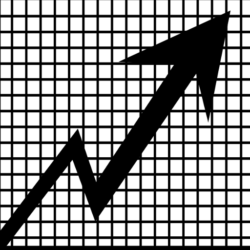Did you do the bulk of your holiday shopping using Amazon Prime? Are you so entrenched in the Amazon ecosystem that you have to be long the stock? Or are you ready to fly away like one of the prototype drones Amazon would like to use for delivery? Either way, let’s take a look at the game of trading Amazon earnings.
Amazon is in a class of stocks all on its own. The market treats its fundamental data like no other. Though it is hard to really label other companies as direct competitors, let’s take a look at some figures some investors tend to use; and compare them with Amazon. Let’s use Wal-Mart and eBay as examples of companies whose businesses sort of intersect with that of Amazon.
| Amazon | eBay | Wal-Mart | |
| Forward P/E | 137 | 15 | 13 |
| Profit Margin | -0.2% | 17.8% | 3.6% |
| Return on Assets | 1.6% | 5.4% | 8.5% |
| Return on Equity | -1.2% | 12.8% | 22.5% |
| Revenue | 66.85B | 16.05B | 474.88B |
| 52- Week Change | 45% | -5% | 7% |
*Data from Yahoo Finance
Pretty interesting. Despite being more expensive on a Forward Price to Earnings ratio; a negative Profit Margin; negative Return on Equity; the smallest Return on Assets; Amazon has had significantly better stock performance than the others. Part of the reason is its impressive revenue.
One of the reasons why the market seems to ignore fundamental valuations is that the business model is diversified and well executed. It is hard to think of a product that is not sold on Amazon. Amazon has built a reliable, easy to use, and fairly priced virtual store for retail products. This has helped it to be in one of those unique positions where it is the automatic internet reflex when you think “I have to buy something”. Think of what you type in a web browser when you want to search. It is automatic. What do you type when you want to price a product, or see what is available, or read reviews? While the profit margins may be small, Amazon has found a way to keep its customers engaged. Therefore producing a fairly strong flow of revenue generation. For example many people scoff at the minimal profit margin made on the Kindle fire tablet as compared to the iPad. However, Kindle users buy more than non-Kindle users. Add to that the Amazon Prime Service. With Amazon Prime, customers enjoy 2-day free delivery on most products. It has been reported that Prime customers buy twice as much as non-Prime customers. With Prime, customers have access to streaming media similar in spirit to Netflix. So in addition to retail, Amazon has a foot in the media streaming business.
Not as visible, as the retail business is to many consumers, is Amazon’s Web Services business. Amazon has been at the forefront of cloud computing since the beginning. This is a high profit margin business. While it is not the largest source of revenue, it is one of the most reliable. Amazon Web Services clients include Netflix, Pinterest, Spotify, NASA, the CDC, the CIA, GE, Yelp, and FCBarcelona. Amazon’s ability to offer affordable computing services that can scale is a huge plus for the wave of internet based startups.
The point is that Amazon has its hand in many different revenue streams, so while not generating huge returns on capital, Amazon has been agile and smart enough to cement its place in whatever it touches. On the other hand, a high Forward P/E typically correlates with a very volatile stock price. That may imply that when investors have an opinion, they buy or sell with conviction. Investors are willing to pay a large premium for smaller earnings thinking that there will be large growth. They are also likely to jump off the ship when they think the earnings are not as exciting and the growth doesn’t merit the premium. This leads us to the rather volatile price action around earnings.
Assuming Amazon is at USD$386:
The average move in either direction has been $23.40. As of today the market is pricing in $26.77 move. The largest move around earnings in recent history has been $56.40 on the upside and $52.40 on the downside. If you look at arithmetic averages of the moves around earnings it would be about $6.70. From the past 13 earnings reports, the stock has closed up for the week 9 times. For the arithmetic average to be smaller than the $23.40 move means that the 9 times it closed up, it was up just enough to be slightly higher than the 4 times it closed down. In other words, when it goes down it, it goes down hard. Given the current market climate, how the market is treating Apple post earnings, and armed with the statistics above you might have better insight on how to play the Amazon earnings game this quarter.
Good luck and trade rationally.

